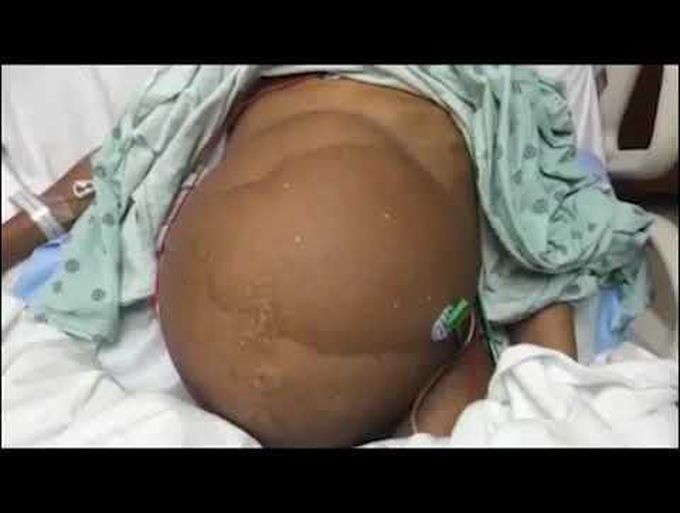


Patient with Large, Intermittent Waves of Peristalsis
Neurogenic Megacolon in Spinal Cord Injury A 44-year-old man with a 20-year history of quadriplegia from a gunshot wound to the neck presented to the emergency department with symptoms of a urinary tract infection. His medical history included chronic megacolon and neurogenic bladder, and he had been admitted to the hospital many times for the management of urinary tract infections and constipation. On physical examination, his abdomen was distended, soft, nontender, and tympanic to percussion, with normal bowel sounds. Extremely large, intermittent waves of peristalsis were noted (see video), and the patient reported mild cramping and a bloating sensation in association with this finding. Computed tomography of the abdomen revealed massive dilatation of the transverse (Panels A and B), descending, and sigmoid colon of up to 18 cm. There was also a substantial fecal burden as a result of neurogenic dysfunction (Panels A and B, asterisks). Stool softeners and laxatives were administered, and the patient was told to avoid antimotility agents. Megacolon is prevalent in patients with spinal cord injuries, especially in older patients and in those with injuries that have been present for more than 10 years. Complications of megacolon include abdominal compartment syndrome, volvulus, and fecal impaction. Definitive treatment includes colectomy, colostomy, or both. This patient opted for conservative medical management of his neurogenic megacolon in accordance with his symptoms.

